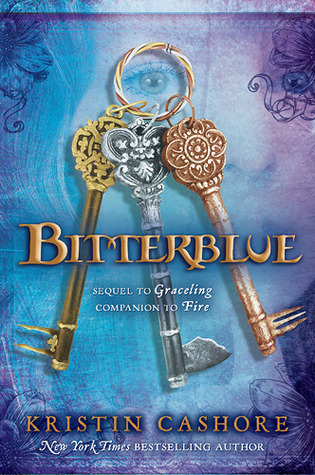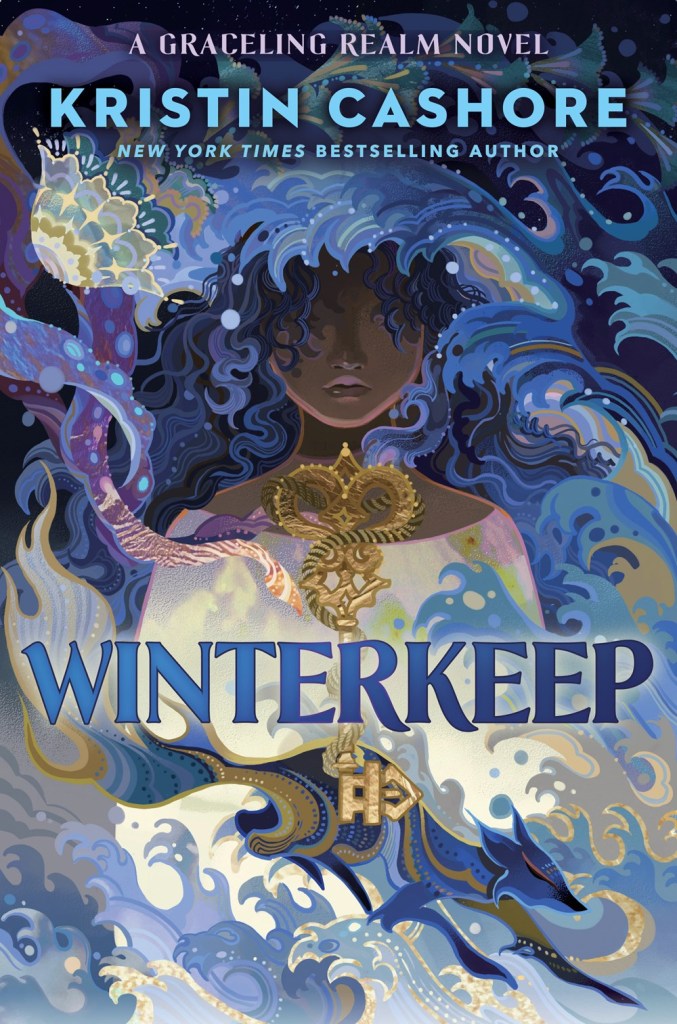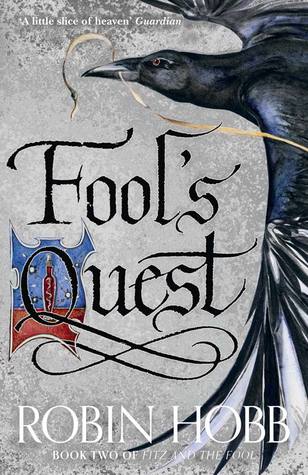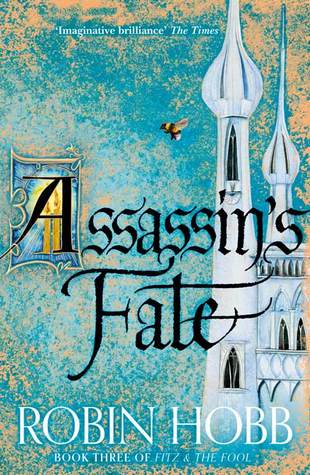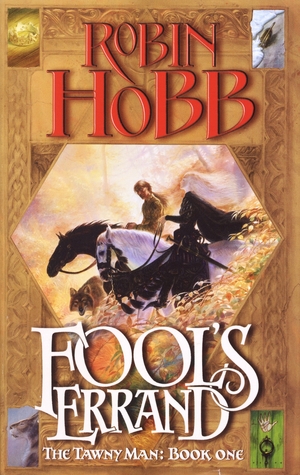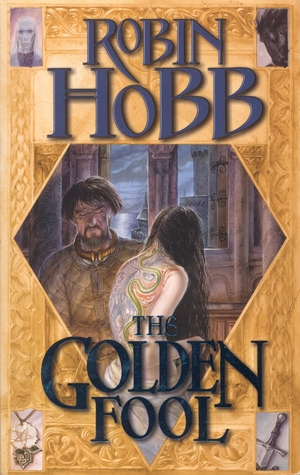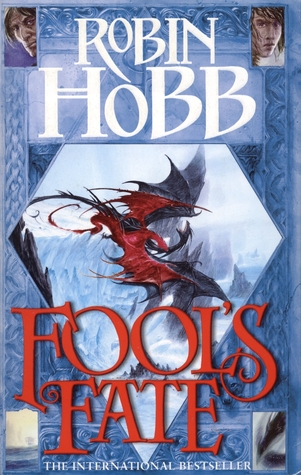Navola
That was…an experience.

When I was 20 percent in, I actually wrote on Paolo Bacigalupi’s Facebook page that I was enjoying his world-building and the use of language and nuance in his new novel, Navola. (As has been previously commented upon, I am a stickler for authentic world-building.) He responded that he had enjoyed creating them, and I can believe that, because there is a lot of loving detail in this book. As it turns out, maybe too much? At first it reminded me of my best-beloved fantasy series, The Queen’s Thief, by Megan Whelan Turner, and also gave me the feel of Ursula LeGuin’s masterpiece of pseudo-historical fiction, Malafrena. But as it went on, I felt so overwhelmed by the discussion of every niggling detail (and the need to figure out what was meant by all the semi-Italian, sometimes Latin-based lingo) that it almost felt like being back in English class, being forced to read a classic work about which I felt reluctant, since it wasn’t my choice. I couldn’t help but contrast this with Bacigalupi’s excellent Shipbreaker series, in which he masterfully paints the scene using just what he needs, and then jumps full-force into the story.
The world of Navola seems to be based on a loosely historical evocation of city-states from the Italian Renaissance. There is all the intrigue of the Borgias, with both front-facing and behind-the-scenes manipulation of absolutely everyone by everyone else, except by our protagonist, Davico, son and heir to the wealthy and successful merchant banker, Devonaci di Regula da Navola, who is the power behind the titular heads of state of Navola. Di Regulai rules by maintaining a calculated balance between greed and politics, alternately controlling and rewarding his many clients within Navola and in all the surrounding states. But despite Davico’s training in all the arts both physical (knife- and sword-fighting, equestrian, etc.) and mental/political (negotiation, the reading of faces and body language, the subtle acquisition of background information), he remains largely ignorant (or innocent) of the real breadth of knowledge necessary to step up to the challenge presented by his father—to rule Navola as Devonaci has done. Davico is a tragic hero: His honesty and authenticity is a liability in the world to which he has been born, and although he toys with rejecting his heritage, he is not strong enough to stand up to the culture within which he is embedded, nor to the expectations of his father.
Although I have always been a proponent of thorough world-building, I found myself overwhelmed by the sheer volume of the information Bacigalupi attempts to convey throughout this nearly 600-page tome. There are multiple information dumps—my least favorite parts of the book—and even in the course of the sometimes exciting and action-packed scenes, the “behind-the-hand” translations of the language, the explanations about the involved parties, and the setting of context weigh down the actual events to the point where I felt I was constantly digging for the meat of the story.
There is a fantasy element (introduced on the cover by the depiction of a dragon’s eye, an actual artifact Devonaci keeps on his desk in his library), but while its presence is strong in the parts of the story in which it is included, those are few and far between. Its significance to Davico is toyed with early on, and then mostly recedes until near the end of the book, almost past the point where anyone would care.
There is also a grimness to this story that may be disturbing to some; in addition to the mental manipulation, there is no escape from murder, rape, or graphic revenge amidst the noble families’ bloody pursuit of power. It’s not quite as overwhelming as, say, Jay Kristoff’s Nevernight Chronicles, but it has its moments of queasy-making horror.
The real fault I have to find with this book, however, is the complete lack of foreshadowing by anyone—the author, the publisher, Goodreads—that this is merely the opener for a continuing story! I began to realize, at about the 80 percent mark, that this would have to be the case, because the events took such a back seat to the development of the venue itself that there would be no time, unless it was criminally truncated, to resolve the hero’s situation and provide a satisfactory ending, and indeed I was right; it’s one of those cliffhangers where the hero lives to fight another day. It’s not abrupt, but the story is by no means at an end and, if it is, then I would have to say, What was the point of all that? Navola is too well written to give it a bad rating, but if, when perusing the teaser for the book on Goodreads, it had said “volume one,” I would have approached it with a completely different attitude that wouldn’t have left me feeling duped.
Maybe the lack of this was the author’s way of leaving himself an out; if the first book doesn’t go over so well, do you really want to invest the time in writing a sequel? But I am here to say, Paolo Bacigalupi, you owe us all the rest of the story, having made us endure through the laborious stick-upon-stone of the world you built to house it!
Too dark
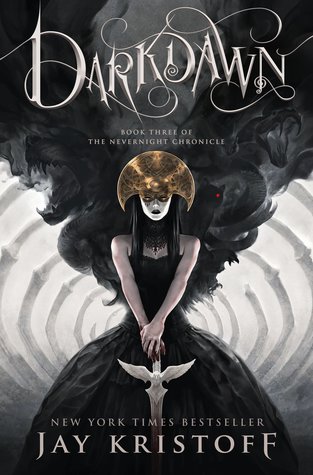
Well, I promised to come back once I had read Darkdawn, the third book in the Nevernight Chronicle by Jay Kristoff, with a final verdict. Sadly, my reaction was mostly one of disappointment.
The action is still tense, the main characters are still developing and doing unexpected things to move the story along, but for me, this was a much less successful book than the first two, for several reasons.
The main one was the love triangle. Having been a teen librarian (and runner of three teen book clubs for 10 years), I can’t tell you how many love triangles I have had to endure in the course of my YA reading. For a period of time they seemed to be an absolute requirement as one element of any book written for teens, and almost none of them improved a story line in any way. This book is not written for teens (I think I mentioned the brutality, language, and raw sexuality of the first two, and that continues here), but for some reason Kristoff just couldn’t resist putting one in, and it’s not pretty. A large part of the book was ruined for me by the callous mean-spiritedness of two of the three participants.
I also didn’t care for what happened to the story line. The first book dealt with origin stories for its characters; the second advanced the revenge plot with a truly horrifying and compelling twist; but in this third book it seemed like everyone involved was just flailing around trying to triumph over one another in a really disorganized way. There were a few saving graces in the early part of the book, such as the interval spent on board ship with the delightful pirate Cloud and his crew, and Mia’s attempt to put things right with her little brother, but by the end the whole thing felt like it had disintegrated into a mash-up of sarcasm and sex, alternating with interventions by various gods and monsters.
Part of what didn’t work for me (and I think this is probably the central issue) is how exactly Mia would manage to counteract her enemies’ moves and at the same time achieve the gods’ ends as she was apparently destined to do. Motives and objectives kept wandering randomly, and at some point it felt to me like Kristoff lost the plot.
You will find, if you look at ratings on Goodreads, that many people disagree with my analysis of this book. It seems like everyone gave it either five stars or one, with no one in between. For the sake of all those (admittedly in the majority) who went with the five and loved this book as unreservedly as the first two, I will say, If you like a sizzling fantasy story with nonstop action, fascinating characters, and big intentions, give the Nevernight trilogy a try. But don’t say I didn’t warn you if you end up on the same page with me by the end of #3.
Dark
My only previous experience of author Jay Kristoff is as the co-writer of the Illuminae books, with Amie Kaufman, which are clever and entertaining but don’t have a singular voice like his Nevernight Chronicles. Someone in a fantasy thread recommended the series; I don’t know how I had gone this long without hearing of it, and decided to give it a try. It didn’t hurt that my Kindle Unlimited was offering the first two for free this month!
I was going to wait until I had read all three books before writing my review, but the combination of how long it is taking me to get through them with the fact that I am still #7 on the wait-list for the library copy of the third book made me decide to review after two. I will come back and comment when I am done with the whole.
My verdict so far is that this series is terrific. I can see why I hadn’t heard of it in the context of young adult literature, because he’s definitely not an author of whom many teens’ parents will approve, since he slings around both traditional and unorthodox language like a dock worker, shockingly emerging from the mouth of his pale, petite, teenage assassin, Mia Corvere. The books are pretty edgy, with graphic descriptions of blood and violence and sex, but the language he uses to describe everything is powerful and sometimes lyrical—it made me happy to read individual passages. (I will say, though, that others have described it as too flowery, over the top, unnecessarily verbose. To each their own.)
This is a series, however, that could be thoroughly enjoyed by older teens (I’m talking 17 up, maybe?), as well as by anyone else who likes sterling world-building, a provocative protagonist, and a driving story line.
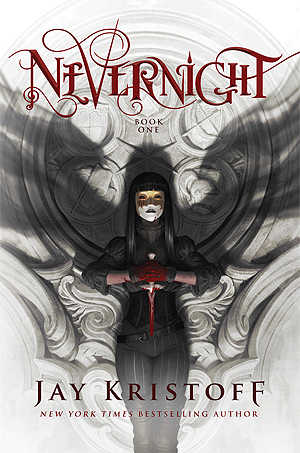
The prevailing theme is a battle between light and dark; but in this tale, the dark is represented by a wronged child who finds refuge in kindly shadows, while the light consists of a bunch of powerful, hypocritical politicians who use the gods of their three suns to reinforce their will as rulers.
Mia Corvere is 10 years old when her father, who has led an uprising to place someone else on the throne, is executed as a traitor in front of her horrified eyes. She is the only family member to escape capture, and hides in the city of Godsgrave, searching for a group of people who will help her with revenge—the Red Church. They are a deadly “school” of assassins, and Mia plans to advance through their ranks to gain the skills to claim the lives of the two powerful men who gloated on the sidelines as her father was hanged.
The first book, Nevernight, consists of Mia’s introduction to and progress amongst the acolytes of the Red Church. Life becomes a competition to the death between herself and her fellow students as they seek to survive while gaining knowledge of steel, poison, and the subtle arts, the eventual goal to be inducted as a Blade of the Lady of Blessed Murder. What she doesn’t know when she enters the dark halls of the school is that a plot is brewing that will, if it succeeds, disastrously counter all her plans for revenge.
In book #2, Godsgrave, Mia is now a Blade, although her induction was a matter of controversy. As the story opens, she is working out of a backwater station of the Red Church, taking assignments to assassinate victims designated by the Church on behalf of their clients. But she begins to suspect that the Church’s motives are far from pure and that their interdiction of her revenge on Consul Scaeva and his priestly cohort, Cardinal Duomo, is less about their need for her to follow orders and more about protecting her mortal enemies in favor of their own self-interest. So she hatches a plot that involves her adopting a desperate masquerade to achieve a confrontation with the men whose lives she seeks to end.
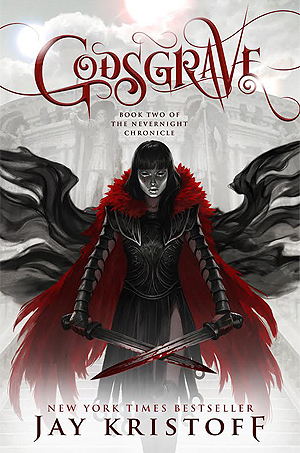
I enjoyed the first book more than the second for two reasons: 1. I always like the origin story the best, and gaining knowledge of the world and learning about where Mia came from and how she arrives at where she needs to be was thoroughly engrossing. 2. The second book is overwhelmingly brutal, bloody, and gory, depicting as it does a group of slaves who fight as gladiators in an attempt to gain their freedom (and some of whom who compete just for the “sanguis et gloria” of it). The second book was also long and involved, and the first half, consisting as it does of a present-and-past flashback/flash forward style, was a little taxing to keep straight. But the whole story bowls along towards the initial revenge plot in a satisfying arc, and after the breathless events of this book, I am greatly anticipating reading part three.
Although…I have to say I’m a little relieved that Darkdawn hasn’t arrived on my Kindle yet, because after two of these books, I need a short break before re-immersion! I finished Godsgrave by pulling a four-hour stint in the middle of the night (did I mention I have chronic insomnia these days?) and I’m kinda exhausted! I’ll be back when I have completed the series.
Illustration
In the category of “Better late than never…”
I had a lesson this week in my year-long portrait-painting class that took as its inspiration Picasso’s harlequins. It was a complicated, lengthy, and convoluted lesson and I almost didn’t do it…and then I got an idea. I decided, instead of painting the boy and girl harlequins like the teacher did, that I would illustrate Robin Hobb’s fabulous Farseer books by making a painting of one of the main characters, the Fool, an albino court jester who (in the early books) sits at the feet of King Shrewd, dressed in black and white motley and playing with a rat-head marotte. So I did, and here it is!
The teacher who taught this lesson is a big proponent of collage, and I found some fun and symbolic stuff for this one. In addition to using tissue paper to good purpose for the ermine of the King’s cloak, I found a dragon, which figures significantly in later books; a Queen of Hearts card, which I interpreted as Queen Kettricken, my favorite female character (well, she was until Bee arrived); and a tiny jester, who is gesturing up towards my Fool from the corner.
Perhaps this will intrigue more readers to look into Robin Hobb’s three trilogies about the Farseers!
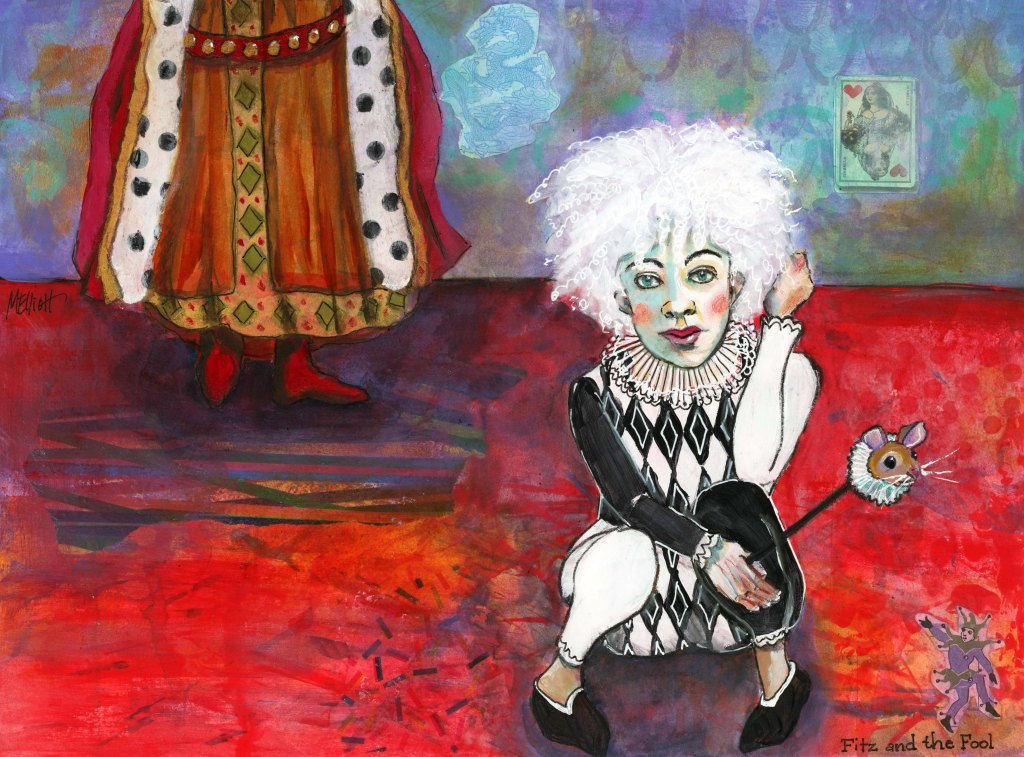
Robin Hobb wrote the Farseer Trilogy, the Tawny Man trilogy, and the Fitz and the Fool trilogy. There are also other books set in the same universe, about the Liveships and their Traders, the Rain Wilds, and the Elderlings.
Trilogy the third
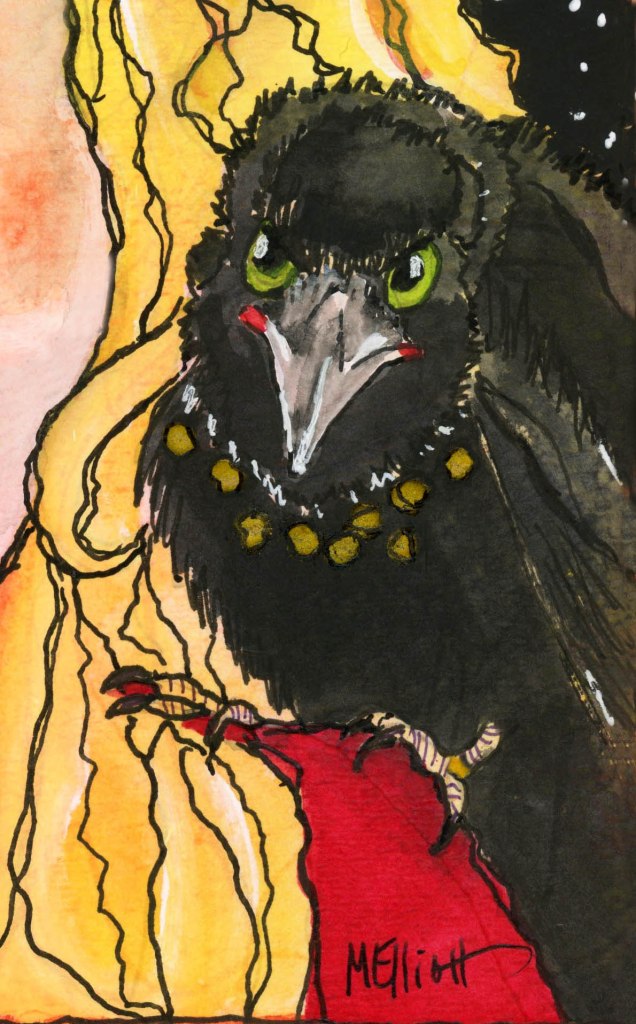
I have spent the past couple of weeks immersed again in the land of the Six Duchies, the cities of the Elderlings, the oceans sailed by the liveships, and the mysterious white island of the Servants, origin of the enigmatic character known variously as the Fool, Lord Golden, and Lady Amber. Yes, I am referring to the third and last trilogy by Robin Hobb that details the story of FitzChivalry Farseer and all his many friends, enemies, family members, and connections. The end of the tale was a fascinating, unexpected, breathless pleasure to read—at the same time as I dreaded its conclusion.
After having gone missing for many years without a word to “Tom Badgerlock,” the Fool makes an abrupt and unexpected re-entry into FitzChivalry’s life that spells disaster for all. Fitz’s little daughter, Bee, is kidnapped from her home in her father’s absence, and borne away to the white island of the Servants, who believe she is the “Unexpected Son” of their prophecies and wish to exploit her talents and control her dreams. Given the almost insurmountable challenge of retrieving her (not to mention the two men’s intention to slaughter every single Servant and raze their city to the ground), Fitz and the Fool seek out all the allies they can muster, including visiting the descendents of the fabled Elderlings, engaging with the Traders who sail the sentient vessels known as liveships, and even entreating the aid of dragons.

I didn’t think I could love anything more than the last trilogy, but with the intriguing introductions of new characters and the rediscovery of old ones in this, it just blew me away. I definitely haven’t been getting enough sleep, because I haven’t been able to put it down!
The adventure is convoluted, the personalities ever more compelling, the confrontations fizzing with action. I dare to say that this is the best extended fantasy tale I have ever read, with this trilogy being the perfect conclusion, and I know I will return to it someday to re-experience the pleasures of this exquisitely detailed saga.
I am somewhat consoled for its ending by the fact that there are other books by Hobb set in this universe, including The Liveship Traders books and the Rain Wild Chronicles. I am reluctantly pulling away from it for a while, because I need to read and review more for this blog after having neglected it so shamelessly for weeks while I indulged my fantasy binge. But I will definitely go there sometime in the near future.
More Robin Hobb
In The Tawny Man trilogy, we pick up with FitzChivalry, royal bastard and secret assassin for the rulers of the 12 Duchies, 15 years after the events of the third book in the Farseer trilogy. Fitz and his witted partner, Nighteyes the wolf, have dropped off the grid, spending time traveling and living rough, then finally establishing themselves in a tiny cottage far from the activities of court at Buckkeep. Fitz, who goes by the name Tom Badgerlock since his widely rumored demise, has adopted Hap, a child brought to him by the minstrel Starling, and has raised him with many of the precepts taught Fitz by his mentor, Burrich. The two of them and Nighteyes are living the quiet, mundane existence that Fitz craved after the tumultuous events of the first part of his life were finally concluded successfully; so when Chade, the royal assassin who taught Fitz his trade, shows up at his cabin to ask him to return to Buckkeep and take up former responsibilities, Fitz isn’t interested. But following his visit, Fitz’s friend the Fool arrives and continues his argument by reminding Fitz that the Fool is the White Prophet and Fitz is his Catalyst, and their partnership is necessary to effect change.
I can’t describe the myriad details of the rest of the trilogy here for two reasons, one being that there are too many important and complex events to explain in a short format such as this, and the other being that I wouldn’t spoil this saga for anyone for the world. But it is the relationships that dominate these books and make it well worth investing your time in this lengthy (2,000+ pages) tale. The connections between Fitz and Nighteyes, Fitz and Prince Dutiful, impulsive heir to the Farseer throne and, most of all, Fitz and the (former) Fool are so rich and compelling that the pages fly by. The introduction of new elements to the story—the OutIslanders and the potential for a union with the Six Duchies through the marriage of Dutiful to their narcheska, Elliania; the “half-wit” serving boy, Thick with his tremendous Skill talent; the charismatic Witted leader, Web; and most of all the enigmatic Lord Golden are equally fascinating, as are the old and new locations in which all events transpire.
If you read and loved the first trilogy, this one will convince you that Robin Hobb is one of the greats when it comes to fantasy sagas. The books are Fool’s Errand, Golden Fool, and Fool’s Fate.
After reading this, I went back to the Cork O’Connor mysteries, by William Kent Krueger, about which I will report on soon; but no sooner had I finished the third of those than I sought out trilogy #3, The Fitz and the Fool, to complete my knowledge of FitzChivalry and his White Prophet. And there are more stories set in this universe, after these!
Immersed in fantasy
I don’t know how I have been a fantasy reader for so many years without discovering Robin Hobb. Someone mentioned her to me lately, and I went looking to find out more. I am now caught up in a prolonged pursuit of everything I have missed.
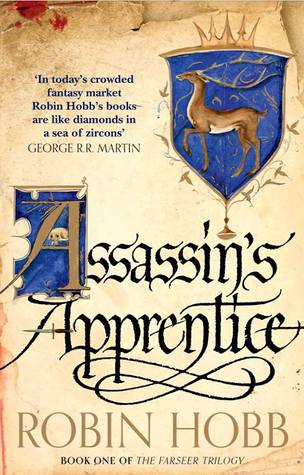
My first incursion was into the world of The Assassin’s Apprentice. Born on the wrong side of the blanket, the Bastard, as he was first called, was brought to the court of the Six Duchies by his maternal grandfather and dropped off to be raised by his father’s people. Turns out he was the illegitimate offspring of the King-in-Waiting, Chivalry, who was such an upright man that the humiliation felt by this revelation of his youthful misdeed caused him to abdicate his place in the succession for the throne. King Shrewd’s second son, Verity, became King-in-Waiting, while his third son (by a different mother) Regal fumed at the denial of what he saw as his rightful place.
But this story, while intimately tied up with all these royals, is about the Bastard, the Boy, finally and somewhat casually called FitzChivalry. Initially he plays no important role in the life of the kingdom; he is farmed out to the master of horse, Burrich, to raise, and Burrich thoroughly educates him in such skills as how to groom a horse and muck out a stall. During this sojourn as an invisible stable boy, Fitz discovers an affinity he accepts as a natural part of life, although others don’t seem to possess it—the Wit. He has the ability to bond with animals, to hear their thoughts and chime with their emotions. This is a talent that was once valued but at some point in history came to be regarded with abhorrence. But before Fitz becomes completely submerged in the life of the stables, it is suddenly decided that he will be called upon to take a more active part in the politics of the kingdom. He is summoned by King Shrewd and pledged to the royal family, and thus begins his training in scribing, weaponry, and the art of the assassin, the secret vocation for which he is apparently destined.
That is the trajectory established in book #1 of this trilogy. Book 2 shows Fitz completing difficult tasks in his new role, while acquiring a bonded partner in the abused wolf Nighteyes, and a potential life partner in the candlemaker, Molly, friend from his youthful forays down to the docks and now a serving girl to the new Queen-in-waiting. But the relentless decimation of the Six Duchies by the Red Raiders from the sea combined with the depredations of Regal on the kingdom while Verity is preoccupied with defending it by use of the Skill (a gift of mind communication and manipulation that is both seductive and draining of its user) put Fitz in a dangerous and exposed position that ultimately spells disaster for him. The third book sees him desperately seeking Verity, who has departed for the mountains on a quest to seek aid from legendary beings called Elderlings, leaving his court to be usurped by a triumphant Regal, who squanders its resources and leaves half the kingdom exposed and undefended. The success of Verity’s quest is highly doubtful, but Fitz, King Shrewd’s Fool, and the young queen, Kettricken, can see no alternative but to follow and aid him if it’s possible.

put me so in mind of the wolf Nighteyes that I begged her to let me feature it in my review of Hobb’s books.
This summary, though seeming fairly detailed, leaves out about 80 percent of the tale Hobb spins in this trilogy, and is completely inadequate to convey the complexity of the world-building, the delineation of the charismatic and fully formed characters, and the emotions invoked by this involved and mesmerizing story. The trilogy held me captive, and although I read two other (unrelated) books after it, I was constantly pulled back to wonder about what happened next to Fitz, the Fool, Kettricken, Chade, Molly and Burrich, and all the rest. So as soon as I had finished those books, I lined up the next two trilogies—The Tawny Man, and the Fitz and the Fool series—on my Kindle, and started in. Since each book is between 600-700 pages, this may take me a while! But immersing myself in this world is a great way to pass a month of summer!

